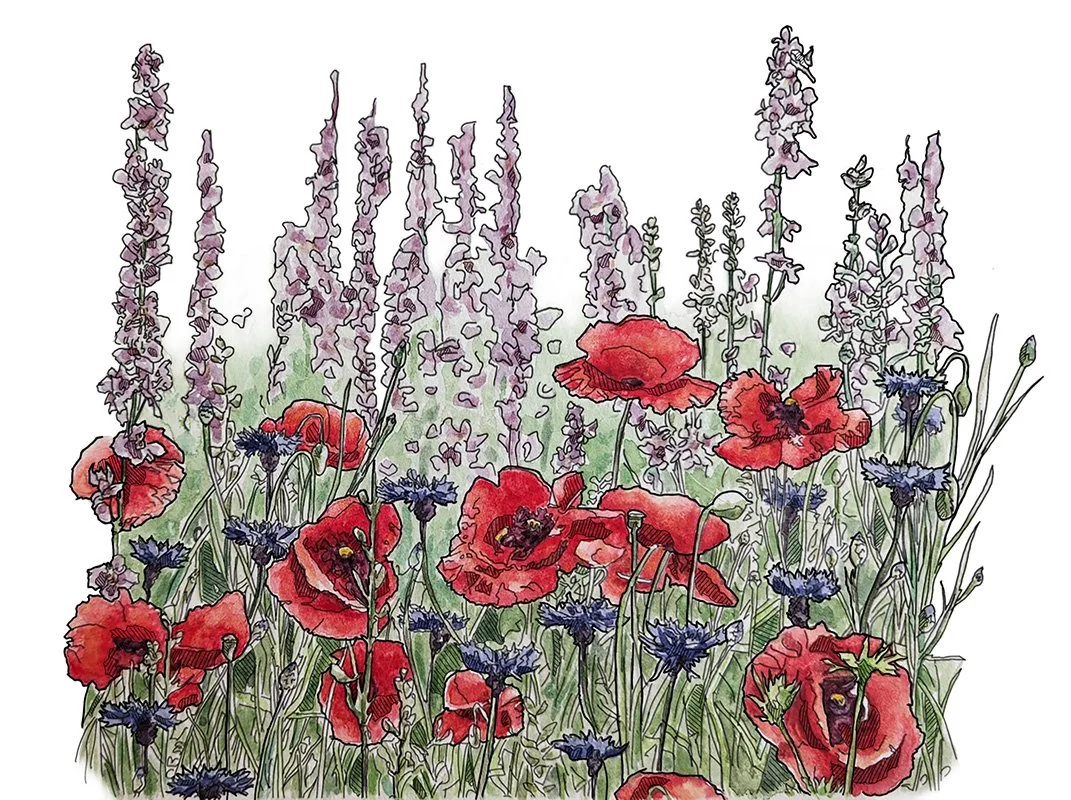NATIVE SUMMER
BLOOMING SHRUBS
Shrubs are often considered the bones of the landscape: providing structure, year-round beauty, and crucial ecological support. Native summer-blooming shrubs go a step further, they offer immeasurable benefits for pollinators, birds, and other wildlife during a season when gardens are in full swing. From early summer blooms to fall berries, these shrubs extend the growing season and support biodiversity. As entomologist and author Doug Tallamy explains in Nature’s Best Hope and Bringing Nature Home, keystone plants are “native plants that are essential to our ecosystems because they support 90% of the caterpillar species that enable our terrestrial birds to reproduce, as well as all of our specialist native bee species.”
Three standout native shrubs that thrive on Martha’s Vineyard:
Buttonbush, Cephalanthus occidentalis
*************
Cephalanthus
occidentalis
BUTTONBUSH
If your landscape includes wetlands, soggy areas, or you’re planning a rain garden, buttonbush is an ideal choice. Native to wetland edges and streambanks, this fast-growing shrub thrives in consistently moist or standing water and can handle heavy clay soil.
In summer, they bloom abundantly with fuzzy ball shaped flowers. These fragrant blossoms attract hummingbirds, bees, butterflies, such as tiger swallowtails and nearly two dozen species of butterfly and moth larvae. In fall, bright red seed heads feed songbirds, small mammals, and even waterfowl.
USES:
Rain gardens
Retention ponds
Erosion control
Its fast-growing root system helps with water quality near marshes, streams or wetlands. Since it can grow in water it is a favorite for wetland conservation.
*************
Hydrangea
arborescens
SMOOTH HYDRANGEA
Our native hydrangea, Hydrangea arborescens, is more than just beautiful, it’s an important host plant for the hydrangea sphinx moth and a magnet for butterflies, pollinators, and birds. Found naturally on wooded slopes and streambanks in the eastern United States, Hydrangea arborescens prefers partial shade and blooms on new wood, meaning it can be pruned close to the ground in late winter.
Several cultivars produce large, ball-shaped flower clusters. This low growing hydrangea fits nicely beneath taller trees and shrubs, or as part of a layered garden design.
Uses:
Mass plantings
Woodland and shade gardens
Pollinator and rain gardens
Sloped or naturalized areas
*************
Clethra alnifolia
SWEET PEPPERBUSH
Clethra is a wonderful addition to any garden. A versatile shrub that can thrive in most conditions. Typically found in open woodlands or swamps along the Atlantic coast this workhorse can flower from full sun to shade. Clethra prefers moist soil but can even adjust to dry, compact soil.
Fragrant white flower spikes appear mid-to-late summer, drawing in bees, butterflies, and hummingbirds. In addition, to being a hardy shrub, Clethra has year round interest. In fall, its deep green leaves turn golden yellow, and in winter, dried seed pods add texture and interest.
Uses:
Seaside or woodland gardens
Mass plantings or hedges
Rain gardens
Pollinator-focused landscapes
Why Native Shrubs Matter
Planting native shrubs helps create sustainable, resilient landscapes. They support local wildlife, improve soil health, and require less water and maintenance once established. Whether you're restoring a coastal property or refreshing a backyard garden, native shrubs offer beauty with a purpose.
Tip: Mix early bloomers with summer and fall bloomers to ensure continuous habitat and visual interest throughout the growing season.
*************





























